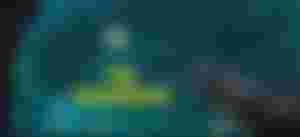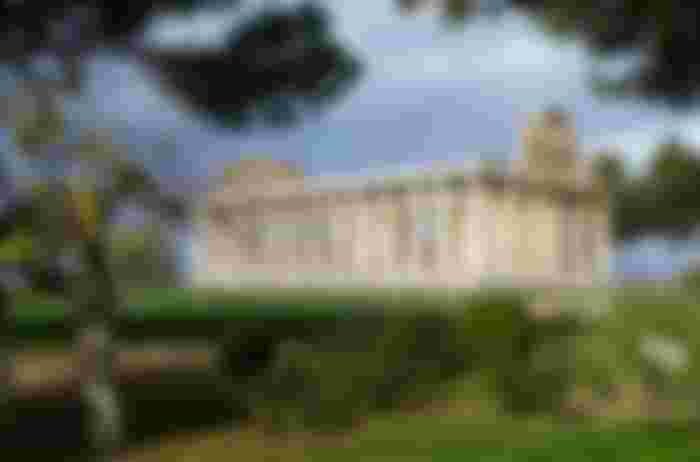
Welcome to my next chapter in the ongoing saga of why Disney’s Star Wars sequels are bad fiction. This time, we’re going to focus on the rest of the world-building in the Disney trilogy now that we’ve gotten all of the problems with the Force out of the way.
I’ve already gone into detail as to why world-building is important in my last article about this trilogy, so I won’t reiterate it here. Go check that one out if you want to know why it’s so important.
And again, beware of spoilers.
The New Republic and the First Order Make No Sense

Leaving off from why the Force, the magical system that governs the whole world in this series, is broken beyond repair, now it’s time to focus on the politics.
The Force Awakens starts by trying to give us the same kind of feeling we had in A New Hope, using similar visuals and introducing another masked villain with a distorted voice who’s in search of a vital piece of information.
Don’t worry, we’ll nitpick the plot later on.
As the movie moves forward, we learn that the First Order, an Empire-knockoff, is slowly encroaching on the rest of the galaxy. They’re apparently so unpopular that they ‘recruit’ through kidnapping babies and are a definite force of evil, yet the New Republic does nothing about them.
They have been converting an entire planet into a super-weapon that will wipe out the new government and assure that they are the dominant governing force in the galaxy.
Oh, and they succeed. J.J Abrams was very happy to reset the Star Wars universe to where he felt he could milk the most nostalgia: Rebels vs Empire.
Problem 1: This is the opposite of fan service! Longtime fans of Star Wars have eager to see where the New Republic goes, and there’s been a plethora of Extended Universe books and games to accommodate that desire.
When Kathleen Kennedy took over the franchise, she immediately decanonized all of that, leading many people, myself included, to believe that the EU stories that did particularly well would be incorporated into the new trilogy – that we’d get a definitive version of the New Republic. Instead, we got a reboot of A New Hope that reset everything, including the original characters, back to where they were at their most memorable.
Perhaps this was done for fear that the prequels were still disliked (audiences have warmed up to them, partially thanks to the popular Clone Wars TV series) and didn’t want to have anything to do with a civil war between two factions that are nearly equal in power. Unfortunately, you can’t just hit the ‘reset’ button and expect everything to be fine and fans to bow down to you.
Problem 2: It makes no sense within the in-universe history.
The original story started with the Empire in firm control of the galaxy. The rebellion is well-equipped, but small compared to the vast resources that the Empire controls. We get tidbits of a government that existed before the Empire, as the Senate is officially disbanded in A New Hope. This indicates that there was something before the Empire more akin to democracy, and also that the Empire isn’t exactly hundreds of years old if they only just now consider themselves so well-positioned that they can end the last remnants of the Old Republic without alarming anyone or delegitimizing themselves.
Even without the prequel trilogy to let us get a good look at this former government and how the Empire rose to power, we can take a guess. It clearly was something that emerged from within the Old Republic itself, as they’ve been pandering, at least superficially, to its Senate to maintain their power. They also have the power to disband the Senate because it’s not part of a foreign government.
With the prequel trilogy, we can see exactly how the Empire rose to power. It was slow, calculated. There was a civil war that was hijacked to serve as a distraction, meanwhile one Senator was able to rise through the ranks until he finally was able to reconfigure the government entirely.
It was cunning, manipulative, and precise. It exposed the weaknesses of both the Old Republic and the Jedi Order, having grown too bureaucratic and clouded. The story worked, in spite of clumsy dialogue, and told a tragic tale.
By giving us a New Republic that knew first-hand the kind of tyranny the Empire represented and then still having them turn a blind eye, Abrams gave us a world that doesn’t make sense. There’s no reason for the New Republic to simply not care about the threat at hand.
I suppose Abrams didn’t care to develop the New Republic because he was going to destroy it anyway – another move that doesn’t make sense. You can’t ride on the shoulders of a story that already determined how hard it was to take out the Old Republic and then say “If only the Sith had a super-weapon…” and pretend that by taking out the government itself that it would disappear.
This is the kind of logic that says, “If we blow up the White House, we’ll have taken over America!” It doesn’t work that way. This is why the United States gets bogged down in so many regime-change wars: it’s slow, costly, and tedious. You don’t just, for example, push a button, remove Saddam Hussein, and then declare Iraq to be another State.
This is especially difficult to do since we’ve already established that a single planet or small cluster of planets doesn’t house the entire government. Senators and other powerful people actually live off-world. There’s no logical reason to suspect that they wouldn’t get together in the aftermath to hastily put together a temporary government in the meantime.
In an effort to continue the narrative of the OT’s Rebels vs Empire, Ryan Johnson in The Last Jedi wants us to believe that after the Resistance successfully destroys the illogical super-weapon (unless the Star Killer Base has a way of traveling through space, it’s a one-time use weapon) no one else in the galaxy is willing to fight against this new government whose predecessor terrorized them all and whose destruction was celebrated throughout the galaxy.
I can see most systems wanting to keep away while they had such a powerful deterrent, as that’s North Korea’s strategy to keep from being invaded and its people liberated (we’ll talk about them again later), but once it’s gone, everyone should’ve been eager to take them down and then either rebuild the Republic (again) or try to fill the power vacuum on their own, potentially creating an actually interesting conflict.
This would be the equivalent of North Korea launching nukes that take out Washington D.C. and the Pentagon. Everyone would be afraid to launch a military attack because they could become the next target.
However, let’s pretend a heroic band of South Koreans manages to infiltrate and render their nukes useless somehow. What do you think would happen? Now every other government would be eager to rush in and take out the North Koreans. They can’t be trusted and now they’re sitting ducks.
The Disney trilogy makes even less sense when you consider that in one afternoon, Lando was able to build a massive alliance that supplied an army in the final film, The Rise of Skywalker.
Basically, you can’t make the New Republic, which spans multiple planets and systems, so easily destroyed after already showing us how long it took to destroy the Old Republic. In fact, the Old Republic was never destroyed! It was reconfigured into the Empire.
The First Order Still Makes No Sense
The idea that Empire holdouts still exists makes sense. There were Nazi holdouts after World War II, after all, and I’m sure not every Japanese person felt okay with surrendering.
I’ll even go so far as to say that the hyper-fanaticism displayed in the First Order makes sense, as the remnants and holdouts are going to be the people most loyal. However, that the First Order has so much power and resources makes little sense.
Were the First Order a small, fanatical type of faction within the galaxy that operated a bit like ISIS, I could see it. But to portray them flying around in ships as magnificent as Star Destroyers and Dreadnoughts and making weapons like Star Killer Base is to take the audience’s suspension of disbelief and kill it dead.
We’re talking about an Order that has so few people in its ranks, it resorted to mass kidnapping to fill its ranks. This is another problem I’ll be addressing next, but for now, it begs the question: how could it have grown so large and powerful so fast with so few people? The Empire had all of the resources enjoyed by the Old Republic out of the box, but the First Order should only have scraps.
On that note, and going back to the kidnapping thing, that makes no sense as well. How are you going to employ such a large operation and not get caught?
Going back to North Korea, they too went on a kidnapping spree under Kim Jong Il. The difference here is that the number of people kidnapped was much smaller than what the First Order is doing. It could go on under the radar for a long time, only really being discovered in the late 90s.
The only reason so many kidnapped people (they ranged from Japan to as far away as Norway) didn’t spark more action is because North Korea uses its nuclear weapons as an effective deterrent.
However, the First Order didn’t get their super-weapon until long after they’d kidnapped so many people they could form huge armies. There’s no reason why this should have been allowed to go on like it did, especially since it would’ve been obvious what the kidnapped infants were being conditioned to do.
North Korea wanted language teachers to train their spies. Even they couldn’t expect to expand their military through kidnapped foreigners, and they certainly never attempted to steal babies from cribs. It would attract too much attention, and it would show the world that North Korea was gearing up for a real attack, not just posturing and puffing their chests out.
Everything Feels so Isolated

A huge difference between George Lucas’ Star Wars and this trilogy is that every place the heroes visit feels so isolated. This isn’t the case with The Mandalorian, which manages to feel like a real world from the settlements Mando and crew come across to the politics at play, and that should be the case for the trilogy as well.
Unfortunately, it isn’t.
Mos Eisley is a bustling city on Tatooine, which is also home to scavenging Jawas, Tusken Raiders, and farmers. There’s also a powerful crime lord there.
The base on Hoth is isolated, as it was meant to be, but Cloud City feels like a real metropolis on Bespin.
Everything we see in the sequel trilogy feels like it exists on the planet all by itself.
Rey scavenges and trades her stuff at a local outpost, but there’s nothing around it. It’s the first bit of civilization that Finn finds after the crash and nothing and no one indicates that there’s anything around it for miles. It certainly doesn’t feel like Mos Eisley!
Maz’s Palace is like this too. It was designed specifically to evoke nostalgia from audiences with the way its interior is basically a copy of Mos Eisley. However, again, it feels like it sits alone on the planet. There’s just nothing around it. For all we know, people land their ships there and go in for a drink, meal, and to conduct business. There’s nothing but trees all around and no indication that any of these people are locals.
Canto Bight is the same way, as is the weird heritage celebration that they come across in Rise of Skywalker. Each place is only as developed as Luke’s island, which is meant to stand alone. It’s a tragedy, as George Lucas’ worlds (and The Mandalorian’s and even Rebels’ worlds) felt so real. They felt like they were places surrounded by more places and more people.
Conclusion
That’s all I’ve got for today. Let me know what your thoughts are in the comments below!


